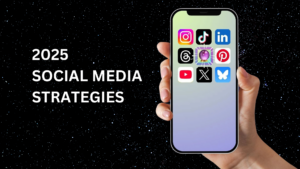
Generative Engine Optimization (GEO)
Generative Engine Optimization (GEO): The Future of Search and How It Differs from SEO As digital marketing continues to evolve, search is undergoing a radical
AI DIGITAL MARKETING AGENCY

To get started with the Google Business Profile tool, you first need to create your account. It’s very simple, and you can do so by clicking this link. You will have the option to either claim or create your business’ listing. If your business pops up when you enter your business’ name, then select it and claim it. If you search for your business but don’t find any results, then you will need to create a new listing.
Either way, the next step is verification. This is the process by which Google ensures that you are the owner of your business. For most businesses, verification is done by mail. However, in some cases, you will have the option to verify by phone, email, or search console. Check with Google about the different verification options, and see which methods you qualify for.
Be aware that verification can take up to two weeks — so don’t delay if you want all the perks of managing your business listing on Google!
After you’ve passed Google’s verification check, you will be prompted to select categories for your business. You can choose one primary category, and up to nine secondary categories. This may seem like a straightforward task, but really take your time choosing the best categories to describe what you do! After all, as of 2020, there are 3942 categories for you to choose from.
,The primary category for your business is given top priority in Google’s algorithm. This is the main deciding factor in whether or not your business will pop up during a user search. Be as specific as possible when selecting your primary category. The more specific you are, the fewer businesses you’ll be competing against. Plus, isn’t it refreshing when you search for something specific and Google provides exactly what you need?
As another rule of thumb, try to select as few secondary categories as possible when describing your business. This may seem counterintuitive, but it actually increases the likelihood of users finding you. You see, if you only use 3 categories to describe what you do, then Google will be dividing its user-directing resources into only 3 channels. On the other hand, if Google has to re-route users to your business based on 10 different categories, then this weakens the effectiveness of its algorithm.
The third step is adding images of your business. Have you ever googled a business, and the only photo result is a vague snapshot from the Google Earth street view camera? Talk about off-putting, right? You definitely don’t want that to be a client’s first impression of your business.
The images you upload should give potential customers a mini-tour of your company. This can be a physical tour, where you showcase the outside and inside of your building, or it can be more of a conceptual tour, where you try to communicate the feel and mission of your company. If you opt for the latter, then you may choose to upload photos of your staff, or photos of the products/services that your business offers. Place yourself in the shoes of your clients, and imagine what you would like to see before deciding to hire or buy from your company.
Also, don’t just upload any old photos you have on hand of your business. These images should be high-resolution, and professional quality. They should also reflect your business in its current form. If you’ve redone the interior of your office, or if you’ve made a lot of new hires, then make sure the photos show your current setup.
If you don’t feel confident taking photos yourself, then you can even hire a local photographer to do this for you. Or, you can ask a creative member of your staff to take the photos.
Next, you can add your address and phone number to your Google Business Profile listing so that potential customers can easily reach you. If your address and phone number are published in multiple places on the web (like on Facebook, Instagram, and your company site), then make sure that this contact info is the same across all of these locations. After all, you want to make certain that the people who want to buy from you can actually find you.
Here’s another tip: when adding a phone number to your business, make sure it’s local. Potential customers may be confused if they think that you’re a local company, but then find an unfamiliar area code when reaching for the phone. They might assume that your business location is inaccurate, and they might even choose to do business elsewhere.
If you look at your Google Business profile, you will see that you also have the option to add posts to your listing. One of these post options is “offers.” With this option, you can let Google users know about special deals and discounts that they can receive through your business. What’s more, you can program these offers with special Call-to-Action (CTA) buttons, directing Google users to your website or order page. You have the following options for CTA buttons:
Offers are a great way to grab Google users’ attention. Plus, in your GMB profile, you have the option to track users’ engagement with your offer. These valuable insights allow you to gauge the success of your offer, and to create a plan for future offers.
By setting up Google Business Profile messaging, customers can contact you directly through your Google Business Profile listing. This increases convenience for your customers, as they are far more likely to contact you if all they have to do is press a little button next to their search results. Sounds pretty good for your business, right?
Here’s how to set up messaging:
And presto — that’s it! You’ll receive a notification in the app every time a customer asks a question about your listing, and every time a customer tries to contact you through the listing.

Generative Engine Optimization (GEO): The Future of Search and How It Differs from SEO As digital marketing continues to evolve, search is undergoing a radical

Updated Best Practices for Building a Brand Presence on YouTube (2025) YouTube continues to be a dominant platform for video content, offering businesses unparalleled opportunities

Best Practices for Building a Brand Presence on Instagram (2025) Instagram continues to dominate as a platform for visual storytelling, brand development, and audience engagement.

10 Proven Social Media Strategies to Dominate in 2025 In the dynamic landscape of 2025, mastering social media requires a strategic approach tailored to evolving

Updated Best Practices for Building a Brand Presence on X (2025) X (formerly Twitter) continues to be a powerful platform for real-time conversations, customer engagement,

Updated Best Practices for Building a Brand Presence on LinkedIn (2025) LinkedIn remains the premier platform for professional networking and B2B marketing, offering businesses unparalleled